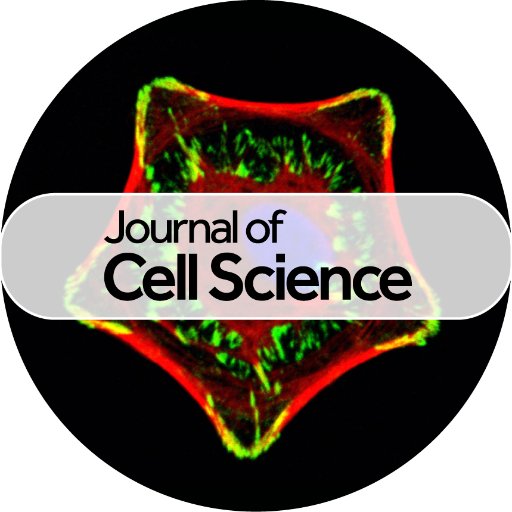
The ScorranoLab
@LabScorrano
Followers
3K
Following
212
Media
81
Statuses
702
Scorrano Lab @DiBio_UniPD & @VIMMPadua. We study #mitochondria #celldeath #contactsites #metabolism #cristae #Opa1. Luca's tweets are signed LS
Padua, Italy
Joined September 2018
This is your reminder there is only ✨2 WEEKS✨to go until our final registration deadline for #FusionAging25 📜Final Few Poster Slots Remaining! 🗓️Deadline: Thursday 07 Aug 2025 🔗Register here: https://t.co/fDNHBiblPJ
1
2
2
This work identifies OPA1-targeting strategies as promising for metastatic TNBC. Big thanks to the funders @AIRC_it @Fondaz_Veronesi 6/6 LS
0
0
1
Pharmacological inhibition with our OPA1 inhibitors MYLS22 and Opitor‑0 confirms selective vulnerability: these small molecules reduce migration and induce cell death exclusively in metastatic lines. 5/6
1
0
0
Genetic ablation of OPA1 impairs mitochondrial respiration, proliferation, and migration in metastatic cells, sparing normal and non‑metastatic lines: this high selectivity prompted us to explore if inhibition of OPA1 can specifically target metastatic TNBC cells. 4/6
1
0
0
We profile the isogenic MCF10A→MCF10CA1a model, finding that MFN1 progressively decreases and DRP1 increases, yielding fragmented mitochondria. Conversely, OPA1 is selectively upregulated in metastatic cells, resulting in tighter cristae and enhanced respiration. 3/6
1
0
0
Metastasis in breast cancer is a key driver of mortality: TNBC, lacking hormone receptors and HER2, stands out for its high aggressiveness and recurrence, calling for a deeper analysis of its cell biology and vulnerabilities. 2/6
1
0
0
Kudos to Antigoni Diokmetzidou, @aurora_maracani, @mau_carr, @AnnaPellattiero, Erwan Rivière for their new @cddpress paper where we make good use of the Opa1 inhibitors that we generated in the lab! Check the paper out here https://t.co/IrUdkqzgQs 1/6
2
0
21
I promise that the style of our presentations is a little bit more plain. LS
If you’re visiting Puglia, Italy 🇮🇹 this summer, don’t forget to stop by Scorrano A small town in the province of Lecce, known worldwide for its stunning light displays ✨ These are true Gothic cathedrals made of lights and colors The very essence of Southern Italy
1
0
14
This poster is a must have for labs working on #MCS! A guide through the work of so many outstanding labs (apologies if we did not cite your work). Hang it in your office or lab, it will please your eyes and inspire your mind! Kudos to the driving force Antigoni Diokmetzidou! -LS
In their Cell Science at a Glance article, Antigoni Diokmetzidou & Luca Scorrano @LabScorrano summarise the mitochondrial contacts characterised in mammals, the mechanisms underlying their formation, and their principal functions. https://t.co/zKHSh7w3Wa
#JCSMitoSI #OpenAccess
1
14
48
11/11 Special thanks to @AIRC_it that funded this project @FRBiomedica since its inception and to grants from @FondazioneHeal @fondcariparo @mur_gov_. Many improved Opitors to follow, hoping to bring them soon to the clinics for the benefit of #AML and other cancer patients! LS
0
0
0
10/ Stay tuned for our collaborative work with the labs of @glytsou @iannisaifantis1 where we show how effective these new Opitors are in models of #AML, where #Venetoclax resistance can be driven by OPA1 and is an important and unmet clinical need!
1
1
4
9/ Indeed, MYLS22 is effective in in vivo models of #TNBC as our @MargheZamb showed earlier in a great collaboration with Stephanie Herkenne's lab https://t.co/x52vhvGigh and in PDX of residual #TNBC as proved by the lab of @DrGEcheverria
1
0
0
8/ We believe that our OPA1 inhibitors underscore how modulating mitochondrial cristae shape by inhibiting its key controller OPA1 is a powerful cancer-therapy strategy. OPA1 inhibitors may pave the way for next-gen treatments in cancer chemoresistance.
1
0
0
7/ Critically, they synergize with the Bcl-2 inhibitor ABT-737 in triple-negative breast cancer cells #TNBC, restoring drug sensitivity & driving apoptosis, a major advance against chemoresistance.
1
0
0
6/ Functionally, both MYLS22 & Opitor-0 accelerate cytochrome c release in isolated mitochondria & MEFs under apoptotic stimuli by desoligomerizing Opa1, confirming on-target cristae disruption.
1
0
0
5/ Through SAR-driven evolution, we developed and synthesized the “Opitors” series. Opitor-0 stands out with improved potency, water solubility & target engagement, becoming a superior OPA1 chemical probe.
1
0
0
4/ Lots of assays confirm that MYLS22 engages OPA1 in vitro & in cells, inducing cristae remodeling & mitochondrial fragmentation—lost in the Opa1K505N binding-site mutant, pinpointing to the extreme specificity of this inhibitor.
1
0
0
3/ All these effects depend on OPA1 GTPase activity. We thus screened ~10 000 compounds via a malachite green HTS on recombinant OPA1, pinpointing MYLS22 as a reversible, noncompetitive inhibitor (IC₅₀≈82 µM) that binds the GTPase pocket.
1
0
0
2/ OPA1 tightens cristae junctions to limit cytochrome c release. Elevated OPA1 in cancers correlates with chemoresistance & poor prognosis, making it a target in anti-cancer research.
1
0
0
Kudos to @AnnaPellattiero C Quirin @MagrinFederico, great collaborators S Moro A Mattarei @msturlese @ProfGavathiotis for our latest @ScienceAdvances paper https://t.co/WJdTiajt7p. Many years in the making but finally we have OPA1 inhibitors reverting cancer chemoresistance! 1/
science.org
OPA1 inhibitors from large-scale screening and chemical optimization restore cancer cell sensitivity to apoptosis-inducing drugs.
5
12
53




